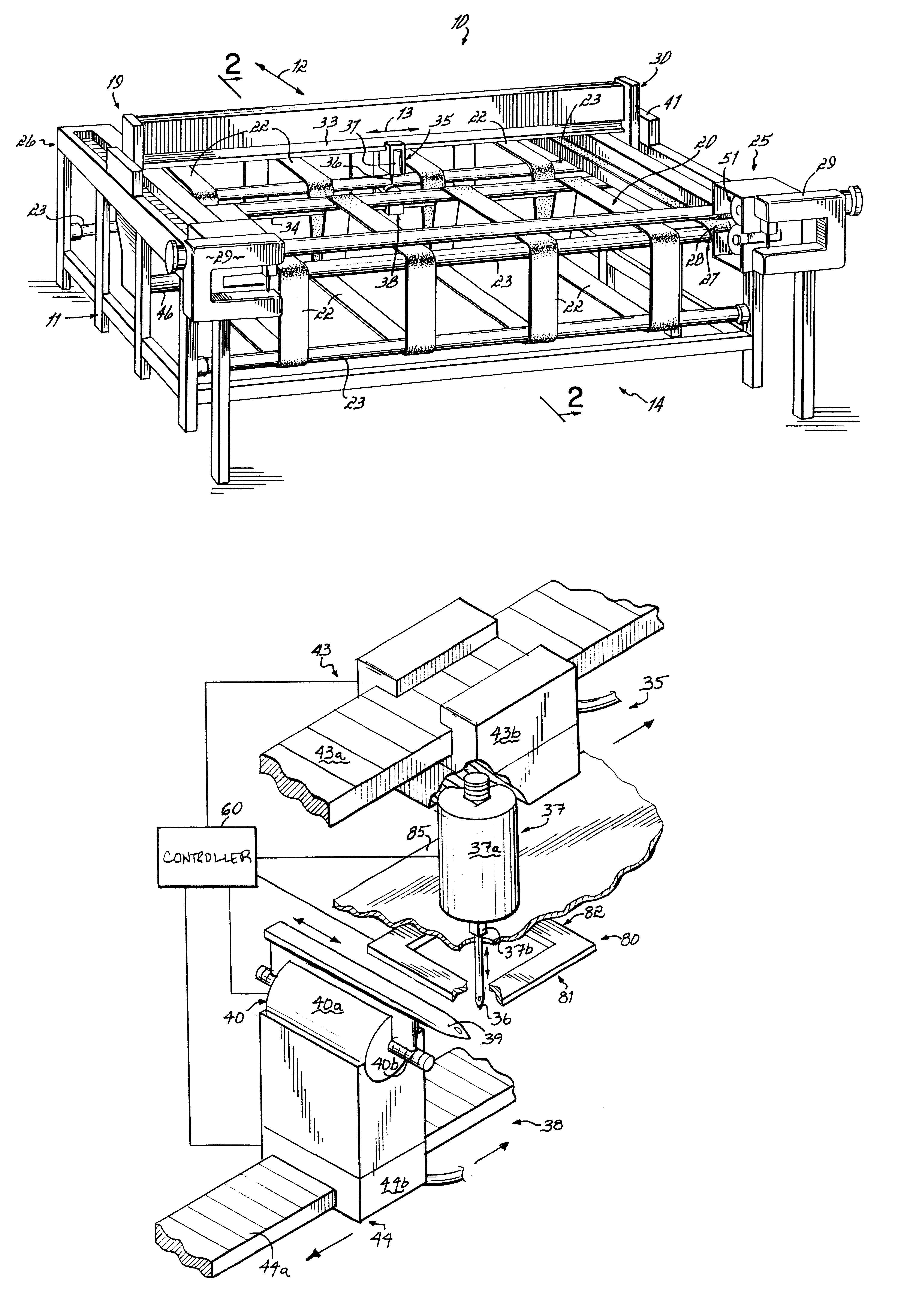Servo driven quilter
a servo-driven, quilting technology, applied in the direction of combination sewing machines, sewing machine control devices, textiles and paper, etc., can solve the problems of needle deflection, needle deflection, and increased likelihood of stitches being missed, and achieve high ornamental quality and quilting at high speed
- Summary
- Abstract
- Description
- Claims
- Application Information
AI Technical Summary
Benefits of technology
Problems solved by technology
Method used
Image
Examples
Embodiment Construction
[0035]FIGS. 1 and 2 illustrate a quilting machine 10 having a stationary frame 11 with a longitudinal extent represented by arrow 12 and a transverse extent represented by arrow 13. The machine 10 has a front end 14 into which is advanced a web 15 of multi-layered material that includes a facing material layer 16, a backing material layer 17 and a filler layer 18. The machine 10 also has a back end 19 from which quilted multilayered material is advanced to a take-up or panel cutting section (not shown).
[0036]On the frame 11 is mounted a conveyor table 20 that includes a set of longitudinally extending belts 22 supported on a set of transverse rollers 23 journaled to the frame 11 to rotate thereon under the power of a drive motor 24. The motor 24 drives the belts 22 to advance the unquilted web 15 onto the frame 11 at the front end 14 thereof and to advance a quilted portion of the web 15 from the frame 11 to the take-up section at the back end 19 of the machine 10. The belts 22 supp...
PUM
 Login to View More
Login to View More Abstract
Description
Claims
Application Information
 Login to View More
Login to View More - R&D
- Intellectual Property
- Life Sciences
- Materials
- Tech Scout
- Unparalleled Data Quality
- Higher Quality Content
- 60% Fewer Hallucinations
Browse by: Latest US Patents, China's latest patents, Technical Efficacy Thesaurus, Application Domain, Technology Topic, Popular Technical Reports.
© 2025 PatSnap. All rights reserved.Legal|Privacy policy|Modern Slavery Act Transparency Statement|Sitemap|About US| Contact US: help@patsnap.com



